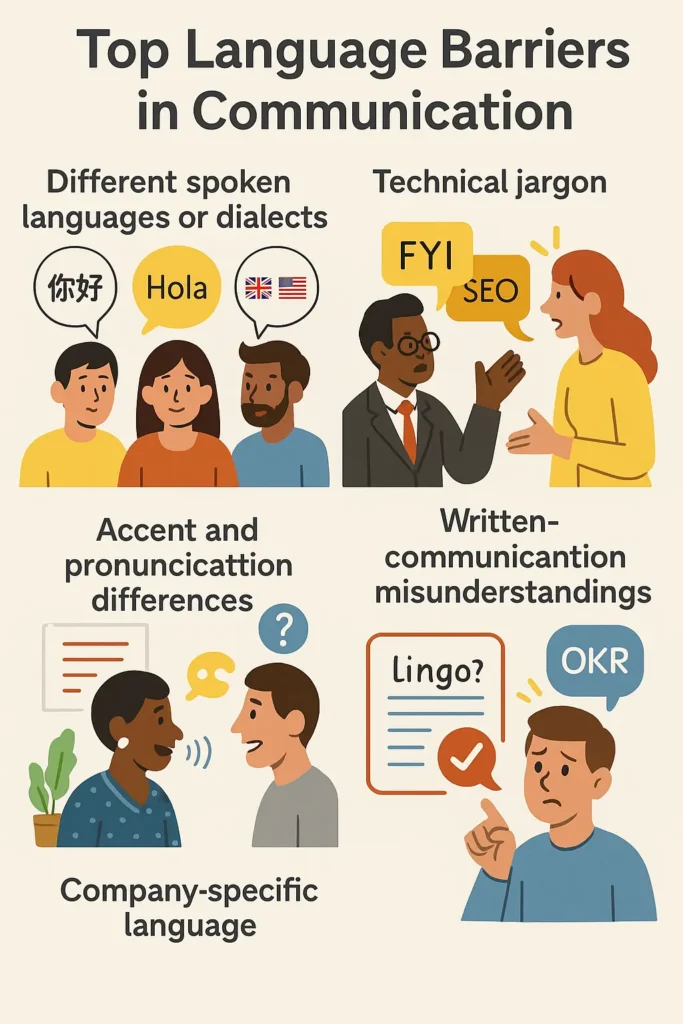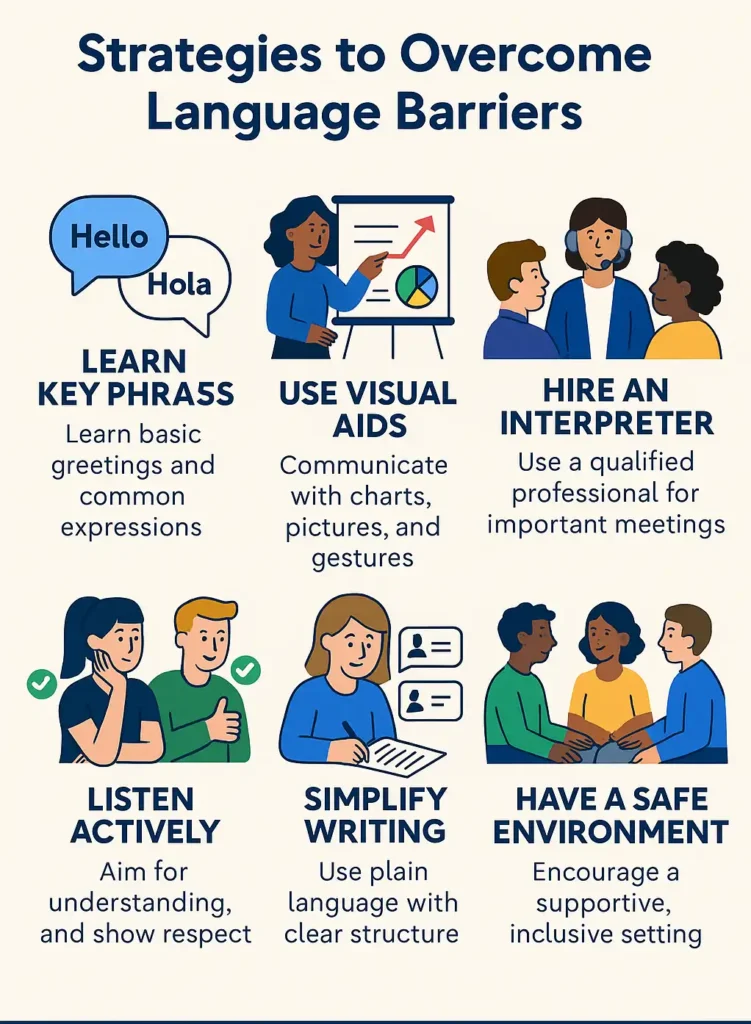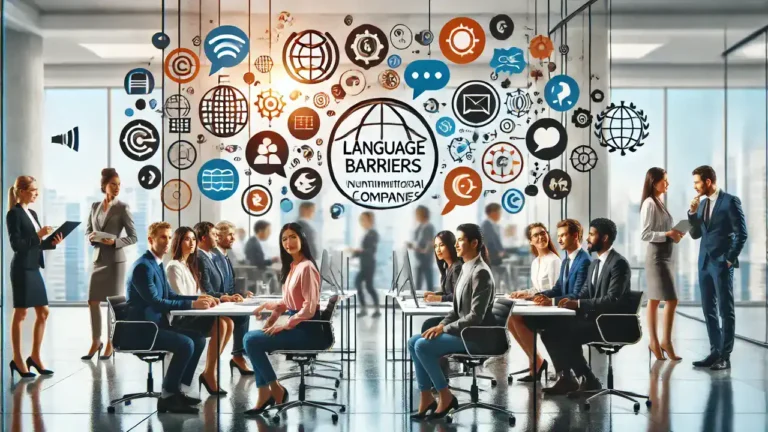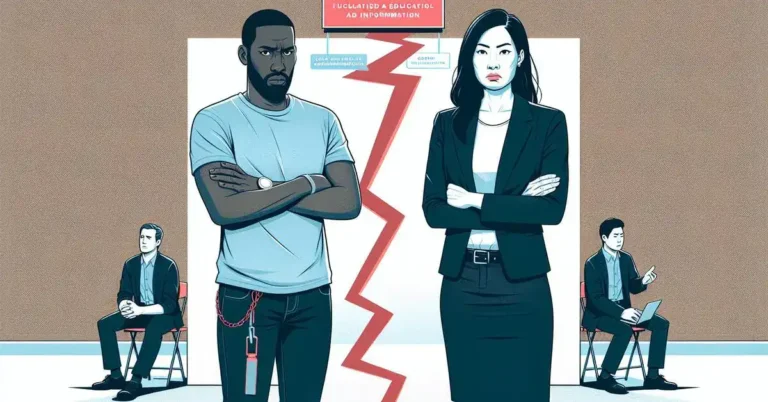Language Barriers to Communication
Have you ever felt lost in a conversation because you just couldn’t find the right words, or maybe someone used a phrase that left you puzzled? Imagine that feeling multiplied by differences in language, accent, dialect, or even nonverbal cues. That’s what people face every day across cultures, classrooms, businesses, and even online chats. Language barriers to communication are among the most common and stubborn challenges in our increasingly global world. But what exactly causes these obstacles, and how can we break them down for smoother, more meaningful connections? In this post, we’ll explore what language barriers look like, why they matter, and practical ways to move past them—one conversation at a time.
What Are Language Barriers to Communication?
Language barriers to communication refer to any obstacle that gets in the way of understanding or being understood because of differences in language. It’s not just about speaking different languages—many times, it comes down to dialects, technical terms, accents, jargon, or even cultural expectations around how we use words.
Sometimes, even people who speak the same language run into trouble. Ever heard British slang that makes no sense in the US? Or noticed how a business meeting can go off the rails when acronyms or specialized terms leave half the room confused? Language barriers show up in unexpected ways, from job interviews to hospital visits, and they can lead to everything from minor misunderstandings to serious mistakes.
Common Causes of Language Barriers

Linguistic Diversity and Proficiency
People come from different language backgrounds, and not everyone has the same level of fluency in the language being used. Someone learning English might struggle with grammar or vocabulary, while native speakers may use idioms that don’t translate well.
- Example: An international student joins a class where most lessons rely on fast-paced discussions. They might find it hard to keep up, missing crucial details.
Dialect and Accent Differences
Dialects are regional versions of a language with their own unique words and pronunciations. Accents can affect clarity, even among native speakers. A New Yorker might find it tricky to understand a Glaswegian, even though both speak English.
- Real-world example: In the UK, there are dozens of recognized English dialects. In India, the same language can sound and feel completely different from one state to another.
Technical Jargon and Company Lingo
Specialized vocabulary in workplaces or industries can become a wall. IT professionals, doctors, or lawyers use terms that mean little to outsiders.
Nonverbal and Paralinguistic Features
Communication isn’t just about words. Gestures, tone, pitch, and facial expressions matter, too. These features can carry different meanings across cultures.
Cultural and Contextual Differences
Even within a shared language, culture influences meaning. Directness, politeness, humor, and even silence carry different connotations. What’s seen as respectful in one culture could be perceived as rude in another.
- Example: In Japan, indirectness is valued, while Americans might prefer clear, direct statements.
Language Disabilities and Cognitive Challenges
Some people have speech disorders, hearing loss, or learning differences that affect language processing. These issues may require alternative communication methods, such as sign language or visual aids.
Digital and Written Communication Hurdles
Text messages, emails, and chat apps have their own barriers—autocorrect errors, lack of tone, or unclear writing. Non-native speakers might struggle more with written communication, missing context or implied meaning.
How Language Barriers Affect Communication
Language barriers can have far-reaching consequences, especially in global business, education, healthcare, and community life.
- Misunderstandings: Even simple instructions can be misinterpreted, leading to mistakes.
- Emotional Impact: People may feel excluded, embarrassed, or anxious about speaking up.
- Productivity Loss: In workplaces, miscommunication leads to delays, mistakes, and lost opportunities.
- Safety Risks: In hospitals or legal settings, misunderstandings can result in serious harm.
Real-Life Examples of Language Barriers
- Business: An international team struggles to collaborate due to jargon and accents.
- Customer Service: A help desk agent and a customer miscommunicate, leading to frustration.
- Travel: Tourists misunderstand signs or instructions, resulting in missed trains or lost luggage.
- Legal: Non-native speakers misinterpret their legal rights or obligations.
The Role of Technology in Overcoming Language Barriers
Technology is rapidly changing how we address communication obstacles. Today, tools like translation apps, real-time speech-to-text software, and video conferencing platforms with live captions are making it easier for people from different linguistic backgrounds to connect. Mobile apps such as Google Translate or Microsoft Translator allow instant translation of both written and spoken words, bridging the gap in casual conversations, business meetings, and even classrooms. Speech recognition technology helps transcribe conversations in real-time, providing accurate written records that support clarity for those who struggle with spoken language or accents.
Video conferencing platforms like Zoom or Microsoft Teams now include built-in live captioning, which helps non-native speakers, people with hearing impairments, and global teams understand discussions more easily. These advances empower remote collaboration, international business, and distance learning.
However, while technology has come a long way, it still has its limits. Automated translations often misinterpret context, idioms, or cultural nuances, sometimes leading to confusing or awkward results. Machine learning algorithms may struggle with regional dialects, slang, or industry jargon, which can result in miscommunication. For sensitive conversations—like legal, medical, or high-stakes business deals—professional human translators or interpreters are still recommended to ensure accuracy and cultural appropriateness.
Despite these challenges, embracing technology remains a practical way to break down language barriers. By combining digital tools with human understanding, organizations and individuals can create a more inclusive environment, encouraging smoother and more effective communication across cultures and languages.
Strategies for Overcoming Language Barriers

Learn and Use Key Phrases
Taking the time to learn a few basic words or greetings in another person’s language can build immediate trust. It shows respect for their background and helps put everyone at ease, even if your pronunciation isn’t perfect.
Simplify Language and Avoid Jargon
Use short, direct sentences and steer clear of technical terms or slang. Breaking complex ideas into simple steps helps ensure that everyone can follow along, regardless of their language proficiency.
Use Visual Aids and Gestures
Pictures, diagrams, charts, and simple gestures can bridge gaps when words are unclear. Visuals make instructions and explanations more concrete, helping to reinforce understanding for everyone involved.
Encourage Active Listening and Clarification
Ask open-ended questions, paraphrase important points, and invite others to confirm their understanding. Regularly checking in during conversations helps catch misunderstandings early
Promote Cultural Sensitivity and Inclusion
Offer training on cultural awareness so teams recognize and respect differences in communication styles. Being open to adapting your approach fosters a more welcoming and effective environment.
Utilize Professional Interpretation or Translation Services
When the message is critical—like in healthcare, legal, or emergency settings—always use certified interpreters. Professional language services ensure accuracy and help prevent costly mistakes.
Foster Language Learning and Practice
Encourage staff or community members to engage in ongoing language classes or language exchange sessions. Building language skills over time helps close the gap and improves long-term communication.
Design Accessible Written Communication
Write clearly, using simple words and short sentences, and organize information with bullet points or headings. Including images or icons can make documents easier to understand for non-native speakers and those with disabilities.
Create a Safe Environment for Mistakes
Let people know it’s okay to make errors or ask for clarification. A patient, judgment-free atmosphere gives everyone the confidence to participate, even if their language skills aren’t perfect.
Language Barriers in Different Contexts
Workplace Communication
Language barriers can slow down meetings, cause misinterpretations in emails, or make it hard for teams to collaborate. Global companies often provide language training or use English as a common language, but challenges remain with technical jargon and slang.
Education
Students learning in a second language may miss subtle cues or instructions, impacting their grades and participation. Teachers can use multimodal instruction, peer support, and differentiated materials to help.
Healthcare
Medical jargon, patient anxiety, and cultural taboos can all become barriers. Hospitals now often hire interpreters or use remote translation services to ensure safe, effective care.
Customer Service
Clear, simple communication and patience go a long way. Companies often train staff in cross-cultural communication to handle diverse customer bases.
Conclusion
Language barriers to communication don’t have to be insurmountable. With a little creativity, patience, and the right tools, we can all work toward clearer, more inclusive conversations. Whether you’re chatting with a neighbor, leading a global team, or teaching a diverse classroom, remember: every effort to overcome a language barrier makes the world a little smaller and more connected.
If you want more practical strategies for improving communication in multicultural settings, check out our related post on intercultural communication barriers.
FAQs
What is a common example of a language barrier in daily life?
A: Asking for directions in a country where you don’t speak the language, leading to confusion and misunderstanding.
How can companies reduce language barriers in the workplace?
A: By offering language training, using plain English, providing translated materials, and hiring diverse staff.
Are nonverbal cues affected by language barriers?
A: Yes, gestures, tone, and facial expressions can mean different things in different cultures, leading to misinterpretation.
What role does technology play in bridging language gaps?
A: Translation apps and video conferencing help, but human understanding and cultural awareness are still essential.
Why is it important to address language barriers?
A: Breaking down these barriers fosters trust, increases participation, and helps everyone feel included—improving outcomes for individuals and organizations.






